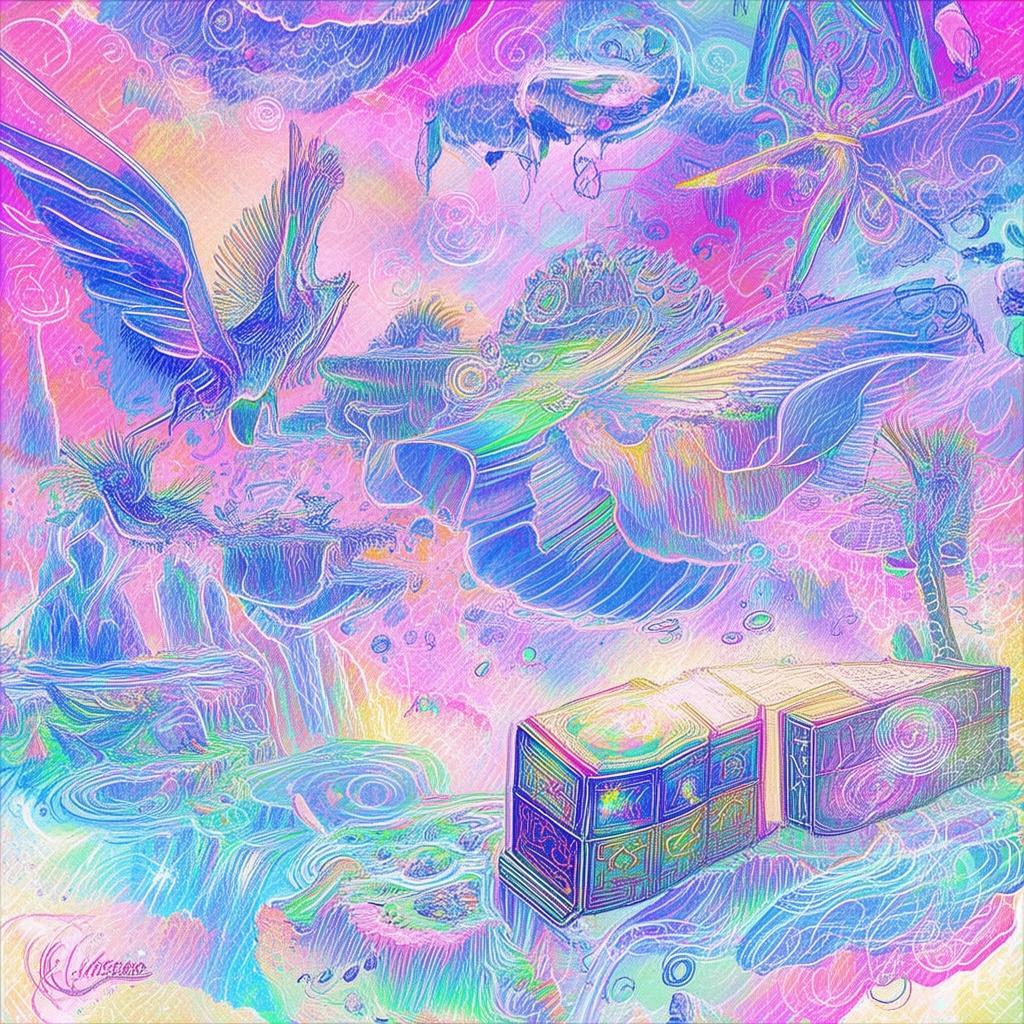The Digital Dilemma: Clown's Last Stand
In the sprawling metropolis of Neo-Haunt, where the neon lights danced with the digital glow of holographic advertisements, Zan the clown stood alone in his dilapidated trailer. The once vibrant face paint that adorned his features had faded into a muted gray, a testament to the years of neglect. His costume, a patchwork of laughter and sorrow, hung limply from the coat rack, a relic of a bygone era.
The world had changed. The age of technology had arrived, and with it, the age of the digital clown. These were clowns who could perform in virtual reality, their faces painted by algorithms, their laughter generated by machines. They were the new stars, the new entertainers, the new icons of the age.
Zan had been a traditional clown, a performer who relied on the raw power of human emotion, the spontaneity of the moment, and the connection with the audience. He had no digital presence, no virtual reality show, no algorithmic smile. He was the last of the old school, the last of the real clowns.
One morning, as the sun peeked through the cracks in the trailer's window, Zan received a message on his ancient flip phone. It was from an old friend, a fellow clown named Leo, who had embraced the digital revolution. "Zan, you have to see this," Leo's message read. "It's a new app that could change everything."
Curiosity piqued, Zan logged onto the app, only to find a virtual version of himself, a digital clown complete with a high-tech costume and a face that glowed with synthetic mirth. The app offered a simple proposition: upload a video of yourself performing, and you could become a digital sensation, reaching audiences across the globe.
Zan hesitated. The thought of becoming a digital clown was tempting, but it was also a betrayal of everything he stood for. He loved the rawness of his art, the connection with the audience, the laughter that was real and unfiltered. Could he really trade that for the allure of virtual fame?
As he pondered the decision, the app's algorithm began to analyze his performance, breaking down his every move, his every gesture. It was a chilling reminder of the age in which he lived, where everything was quantifiable, where every emotion could be measured and manipulated.
The pressure mounted. The app was gaining popularity, and the competition was fierce. Zan's hesitation was costing him potential viewers, potential fame. He knew he had to act quickly.
One evening, as the city lights flickered in the distance, Zan stood before his audience, a small group of children gathered around him in the park. He donned his old, faded costume and began his performance. The children laughed, their faces alight with joy, and for a moment, Zan felt a connection to the past, to the essence of his art.
But the digital world was relentless. The app's algorithm continued to analyze his performance, and the pressure to conform grew. Zan found himself at a crossroads, his identity hanging in the balance.
One night, as he lay in his bed, Zan had a vision. He saw himself as he once was, a vibrant, energetic clown, his face painted with the colors of joy and sorrow. He saw himself performing for a crowd, their laughter echoing in his ears. He saw himself as he was now, a relic of the past, his art forgotten, his identity lost.

The vision was a wake-up call. Zan realized that he had to fight for his art, for his identity. He had to stand up against the digital tide and prove that there was still a place for the real clown in the age of technology.
The next day, Zan gathered his courage and uploaded a video of his performance to the app. It was raw, unfiltered, and real. The children's laughter was genuine, their faces filled with genuine joy. The app's algorithm couldn't quantify that, couldn't manipulate it.
The video went viral. People from all over the world watched, shared, and commented. They saw the real clown, the one who had stood up against the digital tide, and they loved him for it.
Zan's journey was far from over. The battle for the soul of clowning was far from won. But he had taken the first step, and he knew that as long as there was one real clown left, the art of clowning would never be forgotten.
In the heart of Neo-Haunt, where the digital world was encroaching on every corner of life, Zan the clown had found his place. He was the last of the old school, the last of the real clowns, and he was ready to fight for his art, for his identity, and for the future of clowning in the age of technology.
✨ Original Statement ✨
All articles published on this website (including but not limited to text, images, videos, and other content) are original or authorized for reposting and are protected by relevant laws. Without the explicit written permission of this website, no individual or organization may copy, modify, repost, or use the content for commercial purposes.
If you need to quote or cooperate, please contact this site for authorization. We reserve the right to pursue legal responsibility for any unauthorized use.
Hereby declared.









